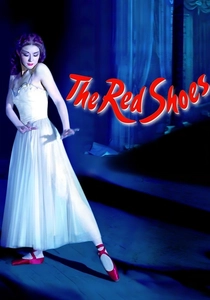If you were captivated by the poetic beauty and tragic romance of Children of Paradise (1945), this article is for you. Often hailed as one of the greatest French films ever made, Marcel Carné's masterpiece weaves a tale of love, art, and destiny in 19th-century Paris. Here, we explore 10 movies and shows that share its lush storytelling, complex characters, and timeless themes—perfect for fans craving more cinematic magic.

The Passion of Joan of Arc (1928)
Description: A deeply emotional and visually striking silent film that captures the trial and martyrdom of Joan of Arc, focusing on her inner turmoil and faith.
Fact: The film was thought to be lost for decades until a complete print was discovered in a Norwegian mental hospital in the 1980s.
 Watch Now
Watch Now 
The Rules of the Game (1939)
Description: A masterful blend of comedy and tragedy, set against the backdrop of a decadent society, exploring themes of love, deception, and social hierarchy with intricate character relationships.
Fact: Initially met with controversy and was banned during World War II for its perceived demoralizing effect. Later restored and hailed as one of the greatest films ever made.
 Watch Now
Watch Now 
Beauty and the Beast (1946)
Description: A poetic and visually enchanting fairy tale that delves into themes of love, transformation, and the duality of human nature, presented with a dreamlike quality.
Fact: The film's production design was heavily influenced by the paintings of Vermeer and Rembrandt, creating a timeless and magical atmosphere.
 Watch Now
Watch Now 
The Red Shoes (1948)
Description: A visually sumptuous and emotionally intense story about the sacrifices demanded by art and love, featuring breathtaking ballet sequences and a tragic narrative.
Fact: The film's 15-minute ballet sequence is considered one of the most ambitious and visually stunning scenes in cinema history.
 Watch Now
Watch Now 
Orpheus (1950)
Description: A modern retelling of the Orpheus myth, blending surrealism with classical themes of love, death, and artistic obsession, set in a stylized post-war Paris.
Fact: The film's mirrors serve as portals to the underworld, a visual metaphor for the boundary between life and death.
 Watch Now
Watch Now 
The Earrings of Madame de... (1953)
Description: A visually stunning and emotionally rich tale of love and fate, revolving around a pair of earrings that symbolize the complexities of human relationships and societal expectations.
Fact: The film is renowned for its meticulous attention to detail, including the use of mirrors and reflections to enhance its visual storytelling.
 Watch Now
Watch Now 
Black Orpheus (1959)
Description: A vibrant and rhythmic adaptation of the Orpheus myth set during Carnival in Rio de Janeiro, blending music, dance, and fate in a lush, colorful setting.
Fact: The film's soundtrack, featuring bossa nova and samba, played a significant role in popularizing Brazilian music worldwide.
 Watch Now
Watch Now 
The Leopard (1963)
Description: An epic and visually opulent portrayal of a fading aristocracy, exploring themes of change, nostalgia, and the passage of time with grandeur and intimacy.
Fact: The film's famous ballroom sequence lasts for nearly 45 minutes and is celebrated for its meticulous choreography and historical detail.
 Watch Now
Watch Now 
The Umbrellas of Cherbourg (1964)
Description: A vibrant and melancholic musical that explores the bittersweet nature of love and destiny, with every line of dialogue sung, creating a unique and immersive experience.
Fact: The film's use of color is highly symbolic, with each scene's palette reflecting the emotional state of the characters.
 Watch Now
Watch Now 
The Young Girls of Rochefort (1967)
Description: A lively and colorful musical that intertwines the lives of its characters in a small town, blending romance, humor, and a sense of whimsical fate.
Fact: Features real-life siblings Catherine Deneuve and Françoise Dorléac as the young girls at the center of the story.
 Watch Now
Watch Now 








